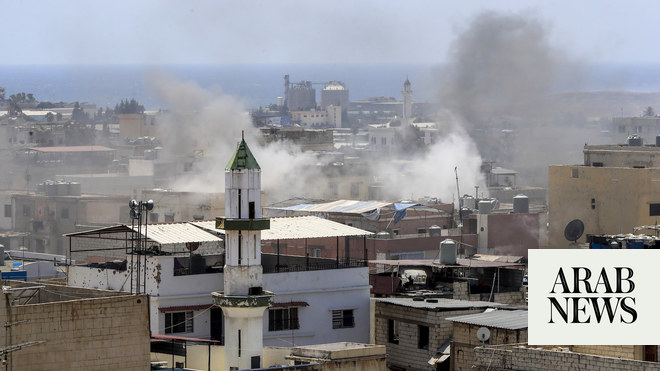
Artist’s first solo gallery exhibition is titled ‘Charts for a Resurrection’
DUBAI: In contrast to the horrifying upheaval and violence in Gaza on news channels across the world, Palestinian artist Dima Srouji offers an uplifting dose of transcendence with her latest work.
For the latest updates, follow us on Instagram @arabnews.lifestyle
Titled “Charts for a Resurrection” and on view at Lawrie Shabibi in Alserkal Avenue in Dubai until July 6, the multidisciplinary show offers some kind of imaginary liberation from the ongoing ruptures and tumult.
“There’s this idea of a return to life in this show,” Srouji told Arab News, stating how it coincidently opened during Orthodox Easter. “Some of us feel like we are returning to Biblical themes these days for obvious reasons. I’ve been thinking a lot about this relationship between death and rebirth,” she said.
Much of her work, she added, begins with a historical exploration of archeology in Palestine and finding ways to enter and explore a landscape — even from afar — through research and archival materials.
In the exhibition Srouji presents works in glass, stone and photography. Each of these is grounded in Palestine’s history, land, heritage, archaeology and living archives, to consider ideas of displacement and offer hope amid hardship.
The exhibition has two separate spaces: a larger “terrain” or land-focused area, and a more intimate “chapel” where installations and archival prints merge imaginary archaeological sites and historical artefacts.
“The reason they’re separate is to refer to this reality on the ground, of the land itself and the different lenses we view the land through, for example, through the history of glass, archeological excavations or stone,” explained Srouji. “All of it offers an intimate encounter with the land itself.”
“The other half of the exhibition offers this almost placeless space where spirituality takes over and this sense of liberation comes through. It’s almost like the process towards resurrection or at least a prayer for resurrection,” she added.
The “chapel” was a way to create a space that feels “somewhat physically safe and spiritually safe.”
An example of the mystical qualities found in Srouji’s work can be found in the larger room, which presents on one wall her delicate stone-carved windows with their distinctive colored-glass inlay. These are meant to reflect ideas of potential future archaeological monuments for the Palestinian landscape.
The creation of the windows themselves present possibilities for restoration and renewal. They are created using the traditional technique for Qamariyyah windows, often found in mosques and churches in Palestine, Yemen and Egypt.
Srouji has long collaborated with archaeologists, glass blowers, anthropologists and sound designers to create her installations, as well as for writing, product designs and architectural projects.
Through her work, which is made across a varied range of media, including text, archival materials, glass, maps and film, Srouji explores identity, displacement, globalization, the spirit of places, and people left behind often with little documentation. Through her art she gives new voice and meaning to the fractured, the displaced and what is seemingly forgotten.
Evocative works include “Maternal Labor,” a series of archival black-and-white prints on aluminum that champion real women often labelled as “basket girls.” They were hired by Western institutions during the 20th century to excavate the land in Palestine they owned and cultivated for centuries. Through their work they uncovered valuable artefacts that were subsequently displaced.
Another poignant work is “The Red River” comprising suspended hand-blown glass sculptures. This is a reference to the Belus River, where some historians say glass-making was first invented.
The evocative red color references the river’s pollution by nearby industries including the Rafael Advanced Defense Systems’ military factory.
The work also contains personal references including to the artist’s grandmother and her homeland of Palestine.
In the intimate dark space that evokes the idea of a chapel, floating replicas of ancient vessels historically given as gifts to the dead for their afterlives set another tone of spiritual resurrection and transcendence.
“There are ideas of healing here, meditation and the possibility of a new future for Palestine,” said Srouji. “We’re so connected to the land. I think there is this spiritual relationship to the land that often gets forgotten in relation to liberation.”
Srouji said the land connects all Palestinians, including those in the diaspora and martyrs. “All the works are inspired by archeological excavations in Palestine and those that actually did the excavations,” she added.
The works on show strive to find new life away from the violence and destruction on the ground “to foster this imagination of what liberation might feel like.”












